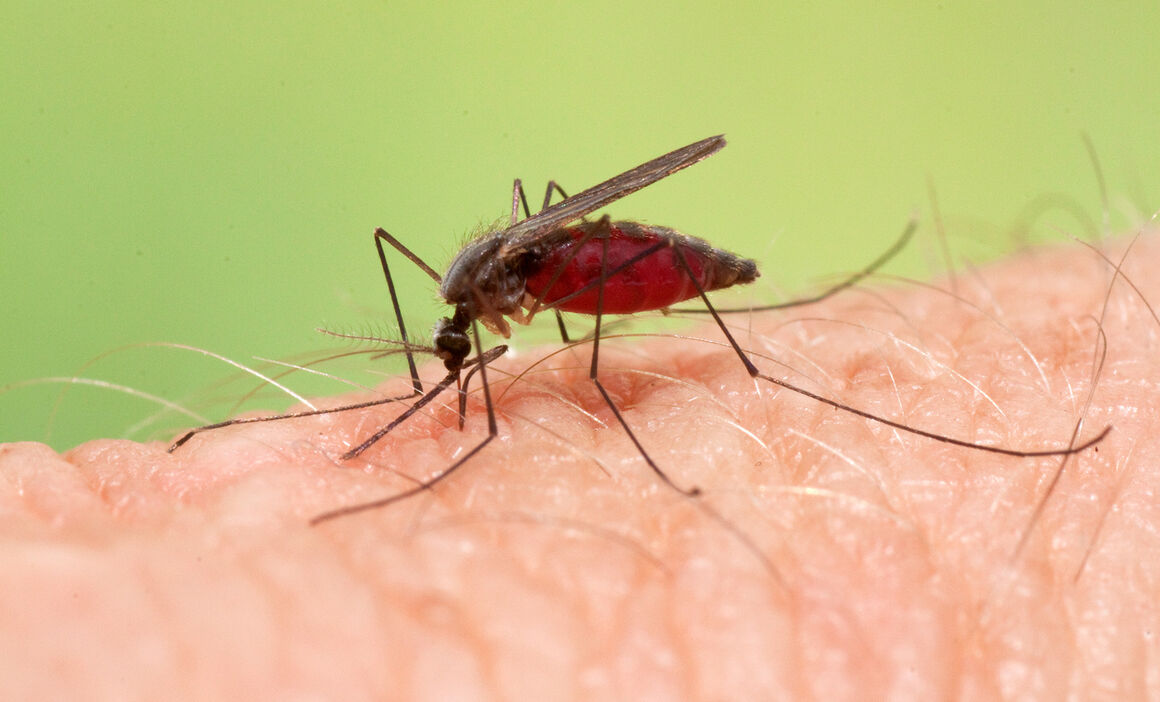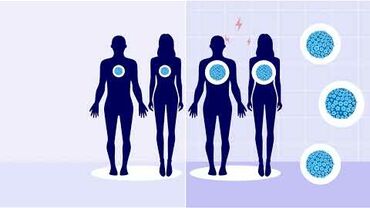Anopheles plumbeus - Factsheet for experts

SPECIES NAME/CLASSIFICATION:Anopheles plumbeus Stephens 1828
COMMON NAMES/SYNONYMS: Anopheles corsicanus Edwards, 1928; Anopheles intermedius Shingarev, 1928; Anopheles nigripes Staeger, 1839
Hazards associated with species
Continued growth of this species in urban habitats could potentially increase contact with humans [1].
This species is a known persistent biter of humans. It is suspected of having contributed to malaria transmission in the past and has been shown to be a competent vector of both tropical and Eurasian strains of malaria.
Geographical distribution
Current distribution
Anopheles plumbeus is distributed throughout Europe, the Caucasus, the Middle East, Iran and Iraq and in North Africa [2]. This mosquito has been found in nearly all European countries, including Scandinavia and Italy, and also in the western Himalayas [3].
Anopheles plumbeus distribution: Albania, Austria, Belarus, Belgium, Bosnia and Herzegovina, Bulgaria, Croatia, Czech Republic, Denmark, Estonia, France (including Corsica), Germany, Greece, Hungary, Ireland, Italy (including Sardinia and Sicily), Liechtenstein, Lithuania, Luxembourg, Macedonia, Moldova, Montenegro, Netherlands, Poland, Portugal, Romania, Russia, Serbia, Slovakia, Slovenia, Spain, Sweden, Switzerland, Turkey, Ukraine and United Kingdom [1].
This mosquito species has begun to utilise artificial breeding sites which have helped it to expand into more suburban and urban areas in Europe.
Entomology
- SPECIES NAME/CLASSIFICATION:Anopheles plumbeus Stephens 1828
- COMMON NAMES/SYNONYMS: Anopheles corsicanus Edwards, 1928; Anopheles intermedius Shingarev, 1928; Anopheles nigripes Staeger, 1839
Morphological characteristics/similar species
Adult females of Anopheles plumbeus can be distinguished from Anopheles claviger by their smaller size, darker colouration, long-haired antennae and more densely scaled wings [2,4].
Larvae of Anopheles plumbeus are easily distinguishable from other species in Europe by examining the frontal setae which are single and reduced in size [2].
Life history: diapausing tendencies, seasonal abundance, flight range and voltinism
Eggs are not laid on the water surface but on the sides of potential breeding habitats, just above the waterline, so the number of generations produced each year often depends upon hydrological conditions. Overwintering takes place in the egg or larval stages, which can survive long periods of water-freezing. Adults of Anopheles plumbeus in Europe are found from late spring until the end of September [2].
This species has a longevity of up to two months [5].
Host preferences
This species is known to be a particularly aggressive biter, feeding at any time of the day on different mammalian hosts, including humans and on birds and reptiles [1].
Aquatic/terrestrial habitat
Larvae of Anopheles plumbeus can be found in water-filled tree-holes with a high salt concentration and deficiency of oxygen [2]. Larvae have been found in water at rot-holes on beech, birch, horse chestnut, elm, oak, sycamore, hornbeam and silver fir trees, from 0.5 to 6.0 metres above the ground [3]. Larvae can also be found in artificial containers, such as tyres, rainwater casks and cemetery vases [5]. In Spain, Anopheles plumbeus is well distributed, having been found for the first time in the country in 1909 in Madrid [6]. It has been found breeding in tree holes (e.g. white and black poplar trees) and artificial containers [7]. A recent survey revealed the presence of this species in water in a plastic bag near several tree-hole breeding sites [1].
More recently, the species has adapted its breeding habits to utilise artificial breeding sites such as catch basins or septic tanks [2]. In north-eastern France, large numbers of larvae have been found in pits collecting rainwater and liquid manure [5]. Larvae have also recently (2010) been collected from artificial containers in urban areas in Albania (E. Velo, personal communication). This species has also been associated with abandoned manure tanks and un-cleaned stables with broken roofing where water has collected [8].
Adults are generally associated with rural habitats such as forests (due to the species being a tree-hole breeder), but it is becoming increasingly common in urban areas including urban parks [9]. The adaptation of Anopheles plumbeus to human-created habitats, particularly abandoned and un-cleaned pig housing where mosquitoes breed in manure pools, has contributed significantly to increases in serious nuisance biting in Belgium [8]. Research in Switzerland and Liechtenstein showed that most specimens were collected in urban/suburban areas [5]. In Belgium, Anopheles plumbeus is present in urban, rural, natural and importation-risk habitats; harbours, airports, and importation company premises [10].
Biting behaviour
Adult female Anopheles plumbeus are persistent biters, being most active during the crepuscular period but also reported as massive biting nuisance during the day [8]. Some populations have shown a strong anthropophilic preference [2].
In some settings in central Europe, this species has become a major nuisance biter in areas where unused septic tanks support mass breeding [2]. Pits collecting liquid manure or rainwater in urban areas are also known to support large numbers of larvae and have been associated with persistent nuisance biting [5].
Environmental thresholds/constraints
Larvae can survive long periods when the water surface is frozen but some mortality is seen if the entire water column becomes frozen [2].
It remains unknown whether the change in breeding habits implies ecotypic differentiation from natural populations across Europe [8].
Epidemiology & transmission of pathogens
Known vector status
Anopheles plumbeus has been implicated in malaria transmission in forests at Caucasian resorts [1], was suspected of being responsible for two locally acquired cases in London [11], two cases reported in Germany [12] and also for cases among forest workers in the Slavonian mountains of north-east Croatia (E, Merdić, personal communication).
Anopheles plumbeus is considered to be an efficient carrier of malaria (Eurasian strains of Plasmodium vivax and tropical strains of Plasmodium falciparum [7]) but is thought to be of minor importance in transmission due to its ecology [2]. In Spain it has never been found involved in malaria transmission [13] or arbovirus transmission [14].
A recent study demonstrated laboratory infection of Anopheles plumbeus females (from Switzerland) with a tropical strain of Plasmodium falciparum, showing an overall infectivity of 94% (45 out of 48 individuals) in one experiment [5], suggesting that this species could play a significant role in local transmission of imported malaria. Experimental data have shown that British Anopheles plumbeus are susceptible to infection with Plasmodium falciparum, at least to the oocyst stage, but malaria outbreaks in Britain are thought to be very unlikely [15].
The laboratory transmission of West Nile Virus by Anopheles plumbeus has been reported [4]. Because of its ornithophagic and anthropophagic behaviour, Anopheles plumbeus is considered to be a potential bridge vector for the transmission of West Nile Virus from birds to humans [16]. Based on the mosquito’s habitat range, it is not predicted to be associated with West Nile Virus transmission in Italy [17].
Public health (surveillance/ control)
Surveillance
Activities in Europe
Various countries have set up nationwide surveillance schemes to establish baseline species distribution and detect changes in distribution/introductions of new species. Such schemes have included targeted surveillance for this species (e.g. Italy, Spain). The information is currently shared with VBORNET partners and collaborators via the network.
Sampling strategies
CO2-baited mosquito magnet traps are thought to be the most effective method of collecting adult mosquitoes [10]. Larval dipping is common for the collection of immature stages from aquatic breeding habitats [7].
Control
Species-specific control methods
Control measures have been used to reduce biting nuisance in urban areas where the species has been associated with breeding in large pits. Such measures include: removing the liquid from the pits or applying a biological larvicide based on Bacillus sphaericus [5]. Personal protective measures to reduce the risk of mosquito bites include the use of mosquito bed nets (preferably insecticide-treated nets), sleeping or resting in screened or air-conditioned rooms, the wearing of clothes that cover most of the body, and the use of mosquito repellent in accordance with the instructions indicated on the product label.
The German mosquito control agency (KABS) monitors this species and applies tablets of Bacillus thuringiensis israelensis to treat cesspools and water containers. Several million tablets are used annually, greatly reducing mosquito numbers in urban areas [18].
References
1. Bueno-Marí R, Jiménez-Peydró R. Anopheles plumbeus Stephens, 1828: a neglected malaria vector in Europe. Malar Rep. 2011;1:e2.
2. Becker N, Petric D, Zgomba M, Boase C, Madon M, Dahl C, et al. Mosquitoes and their control. Second Edition. Berlin: Springer Verlag; 2010.
3. Blacklock B, Carter HF. Observations on Anopheles (Coelodiazesis) plumbeus, Stephens, with special reference to its breeding-places, occurrence in the Liverpool district, and possible connection with the spread of malaria. Ann Trop Med Parasitol. 1920;13(4):421-54.
4. Schaffner F, Angel G, Geoffroy B, Hervy JP, Rhaiem AJB. The mosquitoes of Europe (CDRom). Montpellier, France: IRD Edition and EID Méditerranée; 2001.
5. Schaffner F, Thiery I, Kaufmann C, Zettor A, Lengeler C, Mathis A, et al. Anopheles plumbeus (Diptera: Culicidae) in Europe: a mere nuisance mosquito or potential malaria vector? Malar J. 2012;11:393.
6. Senevet G, Andarelli L. Les Anopheles de l’Afrique du Nord et du Bassin Mediterranéen. Paris 1956.
7. Bueno-Mari R, Jimenez-Peydro R. Study of the malariogenic potential in Eastern Spain. Trop Biomed. 2012 Mar;29(1):39-50.
8. Dekoninck W, Hendrickx F, Van Bortel W, Versteirt V, Coosemans M, Damiens D, et al. Human-induced expanded distribution of Anopheles plumbeus, experimental vector of West Nile virus and a potential vector of human malaria in Belgium. J Med Entomol. 2011 Jul;48(4):924-8.
9. Toma L, Cipriani M, Goffredo M, Romi R, Lelli R. First report on entomological field activities for the surveillance of West Nile disease in Italy. Vet Ital. 2008 Jul-Sep;44(3):483-97.
10. Versteirt V, Boyer S, Damiens D, De Clercq EM, Dekoninck W, Ducheyne E, et al. Nationwide inventory of mosquito biodiversity (Diptera: Culicidae) in Belgium, Europe. Bull Entomol Res. 2013 Apr;103(2):193-203.
11. Snow K. Distribution of Anopheles mosquitoes in the British Isles. J Eu Mosq Control Assoc. 1998;1:9-13.
12. Kruger A, Rech A, Su XZ, Tannich E. Two cases of autochthonous Plasmodium falciparum malaria in Germany with evidence for local transmission by indigenous Anopheles plumbeus. Trop Med Int Health. 2001 Dec;6(12):983-5.
13. Blazquez J. [Susceptibility to malaria in Spain]. Rev Sanid Hig Publica (Madr). 1982 Jul-Aug;56(7-8):683-91.
14. Aranda C, Sanchez-Seco MP, Caceres F, Escosa R, Galvez JC, Masia M, et al. Detection and monitoring of mosquito flaviviruses in Spain between 2001 and 2005. Vector Borne Zoonotic Dis. 2009 Apr;9(2):171-8.
15. Marchant P, Eling W, van Gemert GJ, Leake CJ, Curtis CF. Could British mosquitoes transmit falciparum malaria? Parasitol Today. 1998 Sep;14(9):344-5.
16. Medlock JM, Snow KR, Leach S. Potential transmission of West Nile virus in the British Isles: an ecological review of candidate mosquito bridge vectors. Med Vet Entomol. 2005 Mar;19(1):2-21.
17. Mughini-Gras L, Mulatti P, Severini F, Boccolini D, Romi R, Bongiorno G, et al. Ecological niche modelling of potential West Nile virus vector mosquito species and their geographical association with equine epizootics in Italy. EcoHealth. 2013 Oct 12.
18. Becker N. Influence of climate change on mosquito development and mosquito-borne diseases in Europe. Parasitol Res. 2008 Dec;103 Suppl 1:S19-28.



